How to Turn $8,000 Into $192,000
Two business owners. Same industry. Same $100,000 profit.
One ends the year with $8,000 in more cash. The other ends with $192,000 more.
What’s the difference?
Cash flow mastery.
Mastering cash flow means mastering the pressure around cash that affects our judgment. Customers want longer terms, suppliers want their money sooner, the bank wants their money now, we need new equipment, and so on — it seems everyone wants our cash.
The term "cash flow" gets thrown around constantly in business circles, but many owners don't understand what it really means or how to manage it. This lack of understanding can be the difference between barely surviving and thriving.
Cash Flow Is Not Profit
Profit (or loss) is the difference between sales and expense, which tells us very little about our cash. Why? Because people can buy from you on credit, and you can buy from your suppliers and vendors on credit.
New credit transactions do not increase cash, even for profitable companies.
Cash flow is the movement of money into and out of your business — and it's completely different from profit.
Let’s Compare Two Businesses
Let’s see how two identical businesses can have dramatically different cash positions at the end of a year — and more importantly, how you can be the one who ends up with $192,000 instead of $8,000.
Business A: Ends with $8,000
Despite making $100,000 in profit, here’s what happened:
Where the Money Went:
Accounts receivable increased by $40,000 (extended more credit to customers)
Credit card balances decreased by $10,000 (paid back money owed)
Accounts payable decreased by $20,000 (paid suppliers faster)
Truck loan paid down by $12,000 (debt reduction)
Equipment down payment of $5,000 (capital investment)
Owner draw of $5,000 (distribution to owner)
Total cash outflow: $92,000
Year-end result:
$100,000 profit – $92,000 cash outflow = $8,000 cash increase
Business B: Ends with $192,000
Where the Money Came From:
Accounts receivable decreased by $40,000 (collected more from customers)
Credit card balances increased by $10,000 (strategic borrowing)
Borrowed $12,000 against truck (leveraged existing asset)
Sold used equipment for $5,000 (converted asset to cash)
Owner invested $5,000 (capital injection)
Total cash inflow: $92,000
Year-end result:
$100,000 profit + $92,000 cash inflow = $192,000 cash increase
What's the Difference?
The difference between these two businesses isn’t luck — it’s strategic cash flow management.
The first business made several common decisions that affected cash. They allowed customer payment terms to stretch, becoming an unofficial bank for their clients. They used cash to pay down debt and make equipment purchases without considering the timing impact on their cash position.
The second business understood that cash flow management is about timing and strategy. They collected aggressively from customers, used strategic borrowing to preserve cash, and converted underutilized assets into working capital. They managed their debt to be sure they had sufficient capital available.
Understand How These Factors Affect Cash
Accounts Receivable: Every dollar increase in A/R is a dollar of your cash that customers are using. Every dollar decrease is cash flowing back to you.
Accounts Payable: Every dollar increase in A/P is a dollar of your cash you get to keep longer. Every dollar decrease is cash flowing out to suppliers.
Inventory: Building inventory consumes cash. Reducing inventory (through sales or liquidation) generates cash.
Debt: Taking on debt brings cash in. Paying down debt sends cash out.
Capital Investments: Buying equipment or assets sends cash out. Selling assets brings cash in.
Owner Transactions: Drawings and distributions send cash out. Capital investments bring cash in.
There are other factors that affect cash, but you get the idea. A key insight is that all these factors work in reverse, too. What consumes cash in one scenario provides cash when managed differently.
Profit ≠ Liquidity
Most business owners focus on profit and ignore cash flow until it's too late. They celebrate profitable months while wondering why they can't pay bills or invest in growth.
Meanwhile, their cash-flow-savvy competitors are building war chests and positioning themselves for expansion.
The One Thing You Can Do Today
Learn to calculate your cash conversion cycle.
Add up your average days to collect receivables + average days your inventory sits
then subtract your average days to pay suppliers.
This number tells you how long your cash is tied up in operations. The shorter this cycle, the better your cash flow.
(How to do that is readily available on the internet, and AI will do it for you if you provide just a few numbers from your financial statements.)
Remember:
You can't pay employees with profit.
You can't buy equipment with accounts receivable.
You can't grow on profit alone.
All those things require cash.
Master Cash Flow
Master cash flow, and join the ranks of business owners who sleep well at night — knowing they have the financial resources to weather any storm and seize any opportunity.
About the Author
Martin Holland
is a seasoned business coach and founder of Anneal Business Coaching. With over 45 years of experience and a background owning seven businesses, Martin helps entrepreneurs build clarity, control, and profitability into their companies.
He is the author of The Profit Problem: They Say I Make Money... So Why Don't I Have Any? and co-host of The Cashflow Contractor podcast.
Content Transparency
This article is based on real coaching sessions and actual client conversations. It has been drafted and structured using digital tools to improve clarity and accessibility.
All content has been reviewed and edited by Martin Holland for accuracy and completeness.
Learn More & Connect
Website: annealbc.com
Book: theprofitproblem.com
Podcast: thecashflowcontractor.com
Contact: martin@annealbc.com



